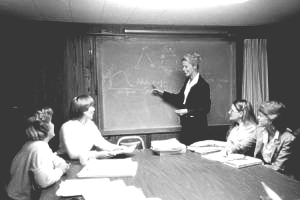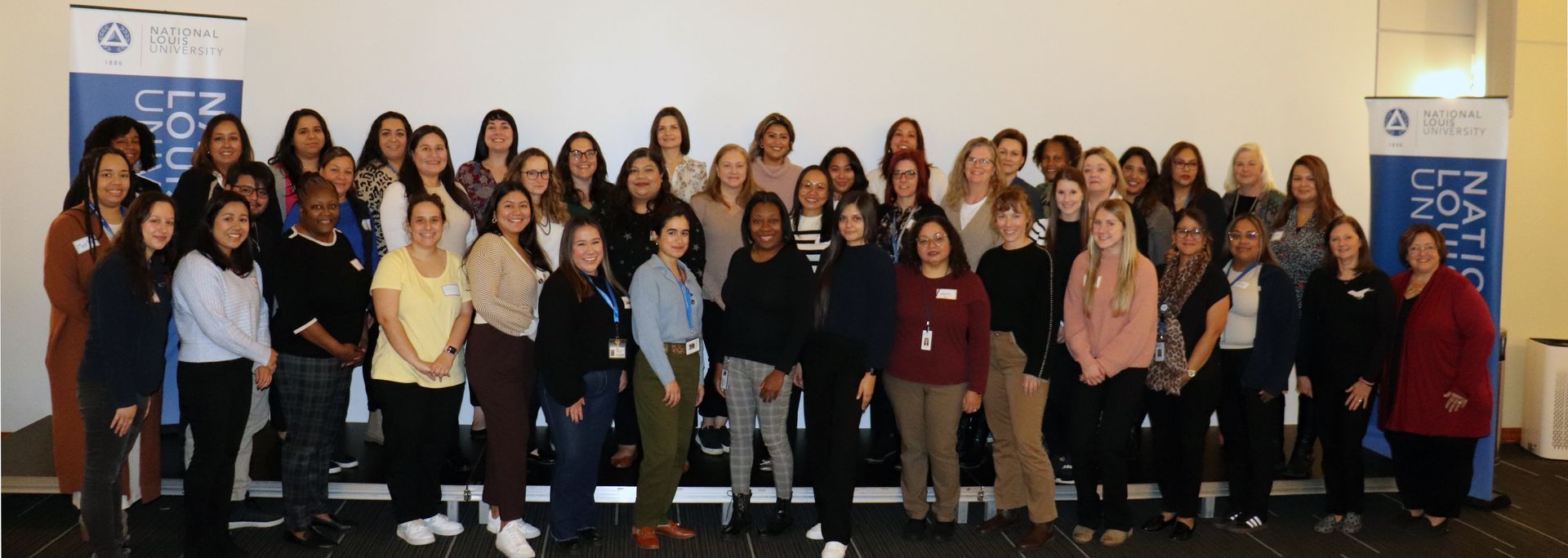BY Linda Butkovich | February 25, 2020
Early childhood programs are active places with teaching, administrative, and support staff working with children and families. Everyone is so busy focusing on day-to-day responsibilities that it is easy to lose sight of the larger organization. Jon Gordon says “You’ll never have a committed team without connection . . . The more connected you become, the more committed you’ll be.” One important way to connect with staff is to schedule centerwide meetings for all employees to come together. Sounds simple, right? Unfortunately, this is often easier said than done. Time pressures and conflicting schedules are just some of the barriers that may get in the way of this goal. It can definitely be a challenge to find time for all staff members to come together; however, the effort will pay off in better communication, collegiality, and connection to the organization.
Centerwide staff meetings are addressed in Item 9 of the Program Administration Scale (PAS). This item focuses on Internal Communication. At the minimal level, “there are at least two regularly scheduled, centerwide staff meetings per year” (Talan & Bloom, 2011). It is important that all staff members have the opportunity to discuss and learn about the center together, as a team. Centerwide staff meetings offer staff the opportunity to interact with staff members they may not typically interact with, get to know one another, share ideas, hear the same information, make decisions, problem solve, revisit how the work they do intersects, share leadership tasks, and build relationships.
Once you have decided to commit time, energy, and resources to bringing all of your staff together for a meeting, the next step is to plan the agenda. Staff are the pulse of the center, therefore involving them in planning centerwide meetings makes sense. It is a good idea to send out a draft of the agenda early and ask staff if they have any items to add. You may also consider asking members of the staff to join you in planning the meeting. When staff are involved in planning the content of meetings, they are more likely to be engaged, participate in discussions, and be invested in decisions.
Centerwide staff meetings provide great opportunities for staff to get to know colleagues they do not typically interact with and to get to know staff they do interact with on a daily basis in a different way. Warm-up activities can be a fun way to begin a meeting. Here are some questions that can help team members learn more about each other:
- What rhyme or poem can you still recite from childhood?
- What is your favorite children’s book?
- What was the first music concert you attended?
- Name something on your bucket list.
- If you could have dinner with anyone in the world, who would it be?
- What do you appreciate most?
Meetings may also be a wonderful way to encourage leadership skills among staff members. One way to do this is to ask for their participation in facilitating agenda items. For example, staff who have attended a conference could share what they learned, teachers could come prepared to share something fun or exciting that has been going on in their classrooms, administrative staff may share a technology tip, or the bus driver may share ideas about how to prepare for winter driving. Another way to encourage leadership is to provide staff with the opportunity to participate in centerwide decision making, such as planning a special event for families, selecting artwork or displays for the center entryway, reviewing public relations materials, or brainstorming field trip options. For some staff facilitating meetings, or a portion of meetings, might be a goal in their individual professional development plan. If you decide to use meetings as a way to build leadership among staff, be prepared to provide feedback. Reflecting on My Facilitation from the Making the Most of Meetings book may be used as a self-assessment for staff who facilitate meetings and a discussion starter when providing reflective supervision.
Finally, be sure to use centerwide staff meetings as a time to recognize important milestones and celebrate accomplishments. Have any staff members recently earned a degree or credential? Any births or marriages to celebrate? Has your center achieved accreditation or received an award? Any special work anniversaries to celebrate?
I hope the next time you are faced with whether or not to hold a centerwide staff meeting you will look forward with excitement to this opportunity to connect with your staff and build leadership among them!
Are you interested in learning more about meetings? Attend the 28th Taking Charge of Change Leadership Academy at the McCormick Center or inquire about having the McCormick Center come to you for training on the PAS or the Making the Most of Meetings books by emailing McCormickCenter@nl.edu.
References
Bloom, P.J. (2011). Making the Most of Meetings: A Practical Guide (2nd ed.). Lake Forest, IL: New Horizons.
Talan, T.T. & Bloom, P.J. (2011). Program Administration Scale (2nd ed.). New York: NY: Teachers College Press.
Linda Butkovich, M.S.Ed., is Report and Certification Manager for the McCormick Center for Early Childhood Leadership. In this role, Linda oversees the Program Administration Scale (PAS) and Business Administration Scale for Family Child Care (BAS) certification system. Linda is also a national reliability anchor for the PAS and BAS. She holds a master’s degree in early childhood special education. Prior to joining the McCormick Center, Linda worked as a developmental therapist with children birth to three years of age and their families. She has also been director of an NAEYC-accredited program, teacher, and family child care provider. Linda also provides training, consultation, and mentoring for early childhood program administrators.






